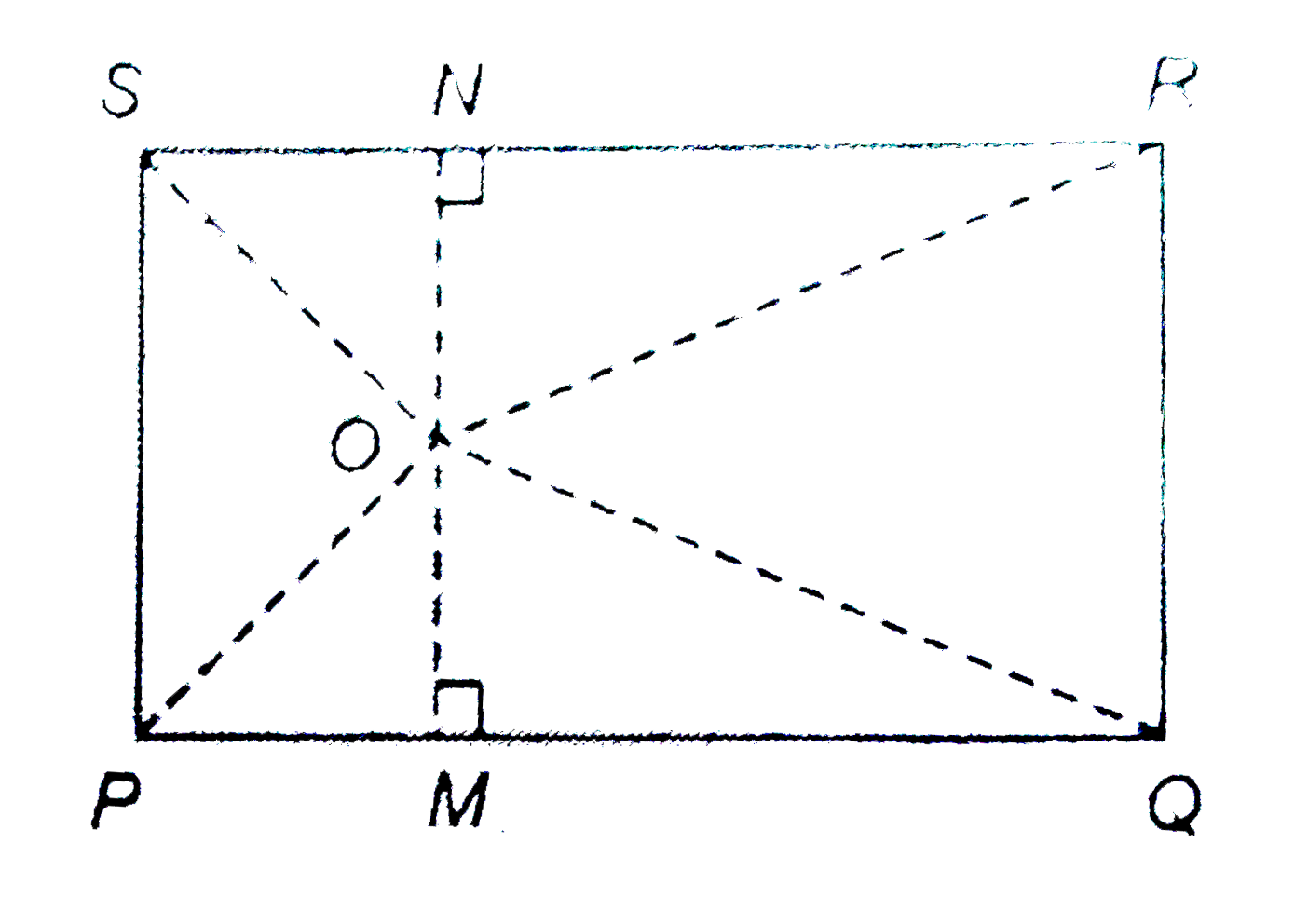The vertices of a rectangle PQRS are joined from an interior point 'O'. Prove that the sum of the area of two opposite triangles so formed is equal to the sum of the areas of remaining two triangles
Through O, draw MN⊥PQ
∴ area of ΔOPQ+ area of ΔORS
=12×PQ×OM+12×RS×ON
=12×PQ×OM+12×PQ×ON
(∴RS=PQ, opposite sides of a rectangle)
=12×PQ×(OM+ON)=12×PQ×MN
=12×PQ×QR=12× area of rectangle PQRS ....(1)
Again
area of ΔOPS+ area of ΔOQR= area of □PQRS−( area of ΔOPQ+ area of ΔORS)
= area of □PQRS−12× area of □PQRS [from (1)]
=12× area of □PQRS ...(2)
From (1) and (2), we get.
area of ΔOPQ+ area of ΔORS= area of ΔOPS+ area of ΔOQR

Topper's Solved these Questions
- BOOK - NAGEEN PRAKASHANCHAPTER - AREA OF PARALLELOGRAMS AND TRIANGLESEXERCISE - Problems From NCERT/exemplar12videos
AREA OF PARALLELOGRAMS AND TRIANGLES
- BOOK - NAGEEN PRAKASHANCHAPTER - AREA OF PARALLELOGRAMS AND TRIANGLESEXERCISE - Exercise34videos
AREA OF PARALLELOGRAMS AND TRIANGLES
- BOOK - NAGEEN PRAKASHANCHAPTER - CIRCLE EXERCISE - Revision Exercise (long Answer Questions )5videos
CIRCLE
Similar Questions
A point O inside a rectangle ABCD is joined to the vertices. Prove that the sum of the areas of a pair of opposite triangles so formed is equal to the sum of the other pair of triangles. Given: A rectangle ABCDandO is a point inside it. OA,OB,OCandOD have been joined. To Prove: ar(AOD)+ar(BOC)=ar(AOB)+ar(COD)
View SolutionA point O inside a rectangle ABCD is joined to the vertices. Prove that the sum of the areas of a pair of opposite triangles so formed is equal to the sum of the other pair of triangles. GIVEN : A rectangle ABCD and O is a point inside it. OA,OB,OC and OD have been joined.. TO PROVE : ar(AOD)+ar(BOC)=ar(AOB)+ar(COD) CONSTRUCTION : Draw EOFAB and LOMAD.
View Solution
Knowledge Check
- Question 1 - Select One
If one angle of a triangle is equal to the sum of the other two angles, then the triangle is
Aan isosceles triangleBan obtuse triangleCan equilateral triangleDa right triangle - Question 2 - Select One
If one angle of a triangle is equal to the sum of the other two angles, then the triangle is
Aan isosceles triangleBan obtuse triangleCan equilateral triangleDa right triangle
If one angle of a triangle is equal to the sum of the other two angles, the triangle is
View SolutionProve that, in a right-angled triangle, the square of hypotenuse is equal to the sum of the square of remaining two sides.
View SolutionThe measure of any exterior angle of a triangle is equal to the sum of the measures of its two interior opposite angles
View SolutionIf the areas of two similar triangles are equal, prove that they are congruent.
View SolutionIf the areas of two similar triangles are equal, prove that they are congruent.
View SolutionIf the area of two similar triangles are equal then the triangles are congruent.
View Solution

